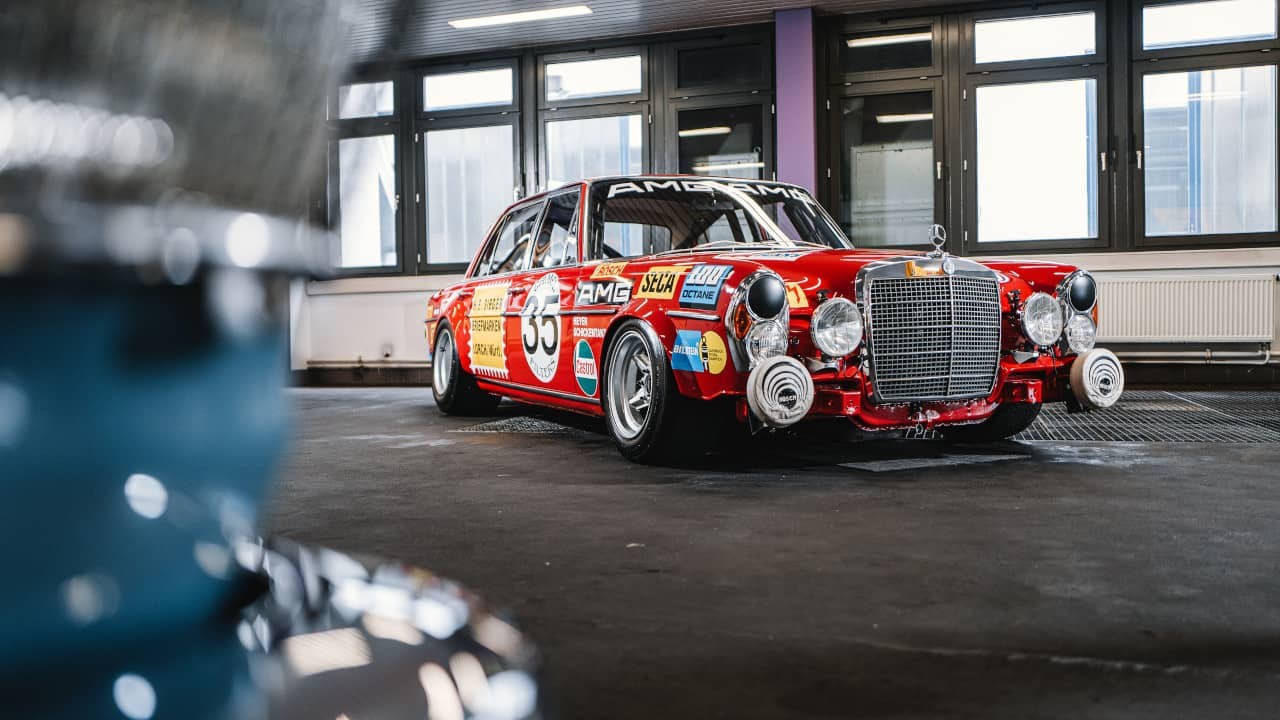Mercedes-AMG, a globally recognized name synonymous with high-performance vehicles, is the performance division of the esteemed German automotive manufacturer, Mercedes-Benz. The moniker itself, AMG, is derived from the surnames of the company’s founders, Aufrecht and Melcher, and the birthplace of Aufrecht, Großaspach. But what exactly does this prestigious badge signify when affixed to a Mercedes-Benz? This article delves into the essence of Mercedes-AMG, exploring its origins, evolution, and what it represents in the automotive world today.
The Genesis of AMG: A Racing Pedigree
The story of Mercedes-AMG begins with a passion for motorsport. In the 1960s, Hans Werner Aufrecht and Erhard Melcher, then engineers at Daimler-Benz, shared a vision for performance enhancement. Despite Daimler-Benz’s withdrawal from motorsports, the duo continued to develop the 300 SE racing engine in their own time. Their dedication bore fruit in 1965 when an engine they refined powered a car to ten victories in the German Touring Car Championship. This success laid the cornerstone for what would become Mercedes-AMG.
Driven by Aufrecht’s ambition to bring motorsport-inspired performance to the road, AMG began modifying Mercedes-Benz vehicles. They focused on enhancing engines and chassis, transforming luxury cars into high-performance machines. This early success as an independent tuner and engine manufacturer paved the way for a closer relationship with Daimler-Benz.
From Independent Tuner to Mercedes-Benz Partner
In the late 1980s, AMG and Daimler-Benz initiated a formal partnership for motorsports activities. This collaboration deepened, culminating in a cooperation contract in 1990. This pivotal agreement marked AMG’s transition from an independent entity to an official partner of Mercedes-Benz. By 1999, DaimlerChrysler (now Mercedes-Benz Group) acquired a majority stake in AMG, solidifying its position as the official high-performance division. Since then, Mercedes-AMG has been integral to Mercedes-Benz, crafting some of the most exhilarating and sought-after performance cars globally.
Decoding “AMG”: Performance, Precision, and Exclusivity
Today, Mercedes-AMG represents more than just a badge; it embodies a philosophy of uncompromising performance, meticulous engineering, and exclusive luxury. An AMG designation signifies a Mercedes-Benz vehicle that has been significantly enhanced in terms of power, handling, and responsiveness. AMG cars typically feature more potent engines, often hand-built by master engine builders following the “one man, one engine” principle, along with performance-tuned suspensions, braking systems, and aerodynamic enhancements.
To cater to a broader audience, Mercedes-Benz also offers AMG Line and AMG Sport trims. These versions provide the sporty aesthetics and some performance-inspired features of AMG models but generally without the full-fledged, high-output engines found in ‘true’ AMG vehicles. However, the core AMG badge remains reserved for the pinnacle of Mercedes-Benz performance, representing a legacy of motorsport success and a relentless pursuit of driving excellence.
In conclusion, Mercedes-AMG stands for Aufrecht, Melcher, and Großaspach, but more importantly, it represents a heritage of racing innovation translated into exhilarating road cars. It’s a symbol of Mercedes-Benz’s commitment to high performance, precision engineering, and delivering an unparalleled driving experience. When you see the AMG badge, you know you’re encountering a vehicle that is not just luxurious, but also engineered for exceptional performance and driving thrills.
